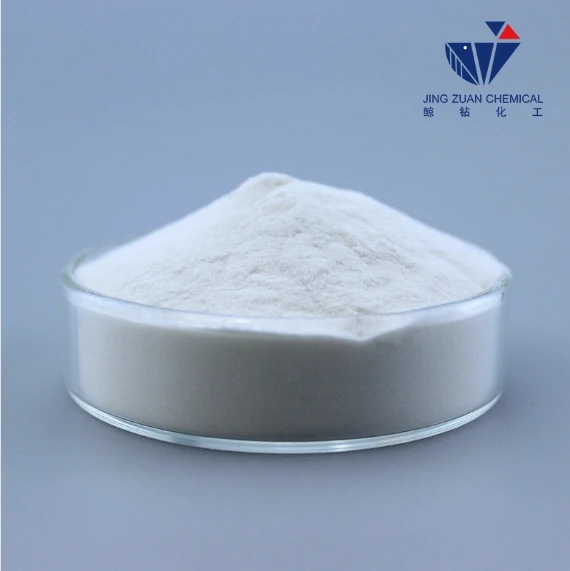
Oct . 19, 2024 11:56 Back to list
hydroxyethyl cellulose synthesis
Synthesis of Hydroxyethyl Cellulose An Overview
Hydroxyethyl cellulose (HEC) is a non-ionic, water-soluble polymer derived from cellulose, a natural polymer found in the cell walls of plants. Its unique properties make HEC an increasingly important material in various industries, including pharmaceuticals, cosmetics, food, and construction. The synthesis of HEC involves the etherification of cellulose, a process that modifies the cellulose structure, enhancing its solubility and functionality. This article provides an overview of the synthesis of hydroxyethyl cellulose, including the chemical processes involved, specific reagents, and the applications of the resulting product.
Chemical Structure and Properties
Cellulose has a linear structure composed of anhydroglucose units linked by β-1,4-glycosidic bonds. In the synthesis of hydroxyethyl cellulose, the hydroxyl (–OH) groups of the cellulose molecule are substituted with hydroxyethyl groups (–CH2CH2OH). The degree of substitution determines the solubility and viscosity of the final product. HEC is characterized by its high water solubility, thickening and stabilizing properties, and chemical stability, making it a versatile compound for numerous applications.
Synthesis Process
The synthesis of hydroxyethyl cellulose occurs through the etherification of cellulose with ethylene oxide in an alkaline medium. The steps of the process are as follows
1. Cellulose Preparation The first step involves the extraction and purification of cellulose from natural sources such as wood pulp, cotton, or agricultural by-products. This phase typically includes bleaching and dehydrating to ensure a high purity level.
2. Alkaline Treatment The purified cellulose is then treated with a strong base, usually sodium hydroxide (NaOH), to deprotonate the hydroxyl groups. This process enhances the reactivity of cellulose, facilitating the substitution reaction.
3. Etherification Reaction The activated cellulose is mixed with ethylene oxide in a controlled environment, typically under heat and agitation. The reaction occurs as ethylene oxide reacts with the deprotonated –OH groups on the cellulose chains, resulting in the formation of hydroxyethyl cellulose.
4. Neutralization and Purification After the reaction is complete, the mixture is neutralized to remove excess alkali. This is typically done by adding a dilute acid. The product is then purified through various methods, including precipitation in a non-solvent, filtration, and drying.
Parameters Influencing Synthesis
Several parameters influence the synthesis of hydroxyethyl cellulose, including
hydroxyethyl cellulose synthesis

- Concentration of Ethylene Oxide The amount of ethylene oxide used directly affects the degree of substitution and the molecular weight of the final product. Optimal concentrations must be carefully calculated to achieve desired properties.
- Reaction Conditions Temperature, time, and the ratio of cellulose to ethylene oxide are crucial factors that can impact the efficiency of the etherification process. Higher temperatures can increase reaction rates but may also lead to undesired side reactions.
- pH of the Reaction Mixture Maintaining an alkaline pH during the initial cellulose treatment is essential for effective etherification. However, the pH must be carefully controlled to ensure complete reaction without degrading cellulose.
Applications of Hydroxyethyl Cellulose
Hydroxyethyl cellulose exhibits a wide range of applications across various industries
- Pharmaceuticals HEC is used as a thickening agent in oral, topical, and injectable formulations due to its biocompatibility and ability to improve the viscosity of solutions.
- Cosmetics In the cosmetic industry, HEC serves as a binder, film former, and thickener in creams, lotions, and hair products, enhancing the texture and performance of formulations.
- Food Industry HEC is utilized as a food additive in various applications, acting as a thickener and stabilizer in sauces and dressings, contributing to the overall texture and mouthfeel of food products.
- Construction In construction, HEC is used in mortars, grouts, and adhesives, improving workability and water retention.
Conclusion
The synthesis of hydroxyethyl cellulose represents a significant advancement in polymer chemistry, offering a versatile product with extensive applications. As research continues in this field, the potential for further innovations and enhancements in HEC technology remains vast. Its unique properties, conferred through careful synthesis and modification, ensure that hydroxyethyl cellulose will continue to play a crucial role in various industries, from pharmaceuticals to construction.
-
Unlocking the Benefits of HPMC Products: A Gateway to Versatile Applications
NewsAug.07,2025
-
Unleashing the Potential of HPMC Ashland: A Comprehensive Look
NewsAug.07,2025
-
Tile Bonding Cellulose: The Key to Superior Adhesion and Durability
NewsAug.07,2025
-
Hydroxypropyl Methylcellulose Powder: The Versatile Component in Modern Pharmaceuticals
NewsAug.07,2025
-
Hydroxyethyl Cellulose: The Versatile Solution for Various Industries
NewsAug.07,2025
-
Hydroxyethyl Cellulose (HEC): The Versatile Polymer for Various Applications
NewsAug.07,2025







